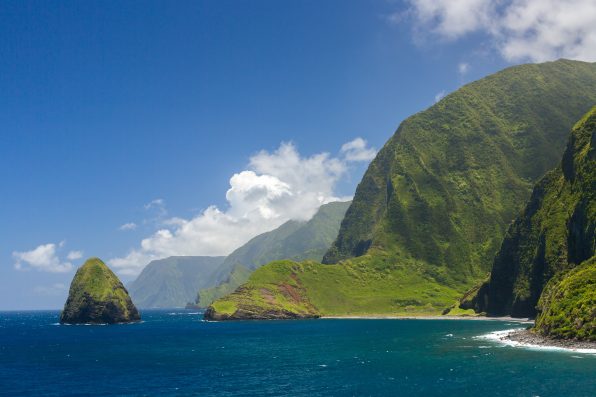In 1866, The Island Of Kalaupapa Was Established As A Leper Colony, And Nearly 8,000 Patients Were Sent To This Prison-Like Remote Area To Be Confined From Society

Since ancient times, those who were diagnosed with leprosy were banished from society and relegated to living in isolation.
The condition is now known as Hansen’s disease, a bacterial infection that affects the skin, damages nerves, and can cause physical deformities. Hansen’s disease was extremely stigmatized for centuries. The Bible described the sickness to be repulsive and impure.
In the past, the disease was thought to be contagious, and there was no cure at the time, so the United States government had patients confined to remote areas in an effort to curb the sickness. Infected children were taken from their parents, and entire families were torn apart.
One of the most notable areas where leprosy patients were exiled was the tiny picturesque island of Kalaupapa. The peninsula was fairly inaccessible, surrounded by cliffs and ocean, and essentially cut off from the rest of the world. Kalaupapa was among the few leper colonies in the United States, and it was by far the largest. Over a span of 150 years, almost 8,000 patients were sent there.
It was established as a leper colony in 1866. Doctors and residents on the island reported that life at Kalaupapa was much like being in prison since you weren’t allowed to ever leave. Additionally, there was insufficient housing, a constant shortage of supplies, and a lack of rights.
Patients’ family members were permitted to visit, but they could only communicate with their ill relatives through a screen of chicken wire.
Although many patients suffered from loneliness and ended up dying within a decade of arrival, others managed to cultivate happy lives for themselves.
In the year 1900, a plan was implemented to improve living conditions and medical care on the island. Cottages, hospital facilities, and eventually, a lighthouse called the Molokai Light was built. Additionally, sports and other activities were promoted.
Nearly a thousand couples on the island got married between 1900 and 1930. People enjoyed dances, musical performances, softball games, church services, and more.

KRIDSADA – stock.adobe.com – illustrative purposes only
By the 1940s, scientists found a cure for Hansen’s disease. The new medications reduced symptoms almost immediately. Slowly, social attitudes toward leprosy patients began to shift, and confinement restrictions relaxed.
In 1969, patients were free to leave Kalaupapa. Today, a small number of Hansen’s disease patients still remain on the island. Six are full-time residents who are now in their eighties and nineties and will likely reside there for the rest of their lives.
If true crime defines your free time, this is for you: join Chip Chick’s True Crime Tribe
Sign up for Chip Chick’s newsletter and get stories like this delivered to your inbox.
More About:Freaky





